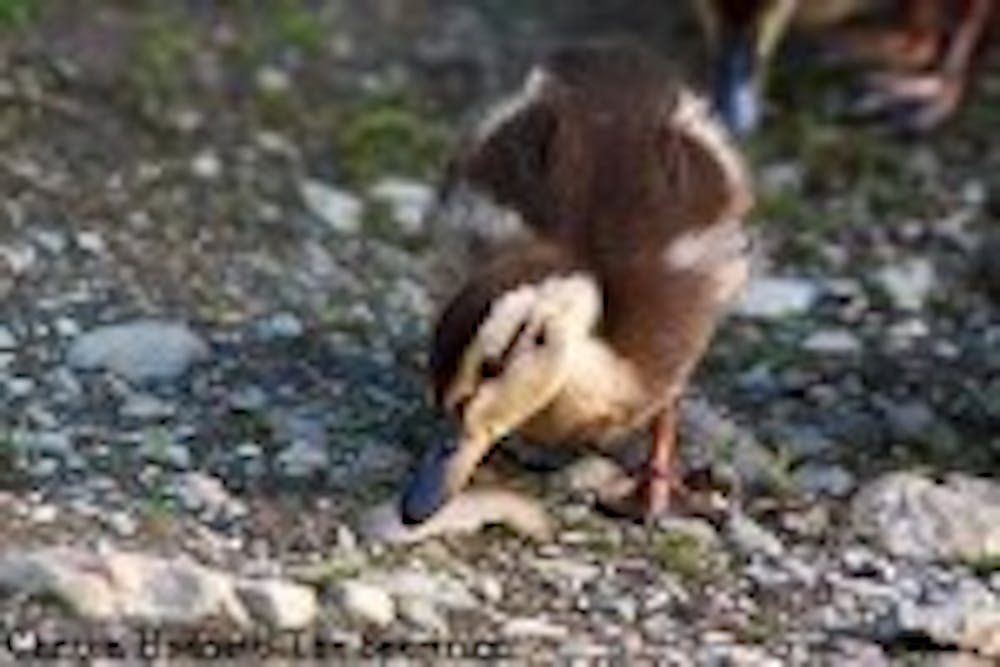Living in Western New York is synonymous with a love for the Bills, chicken wings and the National Hockey League. However, along with these perks come cloudy skies, snow and harsh winds. Most residents are lucky enough to have shelter from these blistering elements, but that is not the case for all who inhabit the region.
Many Western New York animals are either seriously overpopulated or endangered, struggling for food and shelter and ultimately facing extinction.
An excess of animals is dangerous to an ecosystem because it alters plant populations.
'Overpopulation, especially in Buffalo and its suburbs, is of white-tailed deer,' said Chuck Rosenburg, senior wildlife biologist for the Department of Environment Conservation. 'If there are too many deer and they eat too many plants, they could actually wipe out an entire plant species.'
Rosenburg works for the Region 9 program of the DEC, which takes care of the Allegany, Chautauqua, Cattaraugus, Erie, Niagara and Wyoming counties in Western New York.
According to Rosenburg, not only will the extinction of a plant species be detrimental to other plants in the forest, but it will also harm the balance of the animals that eat them, such as deer, birds and squirrels.
In addition to losing a food source, a lack of plant life is destructive to animals that may not have homes.
That said, there is a way that students can help those who are struggling to help themselves. A press release sent out by the Humane Society stated that students can help animals, especially in the winter.
According to the press release, 'with below-normal temperatures and water drying up or icing over in many regions of the country, winter can be a harsh time for our wild neighbors.'
The release suggested making food for animals, such as bird feeders and pinecones filled with peanut butter, or making a safe and warm place for small animals to hide from the brutal weather.
Although many students may be willing to help wild animals that are sick or injured, helping them may put both the animal and the student in peril.
'More direct interventions are often counterproductive and individuals attempting to care for seemingly sickly or hurt wildlife may, in fact, be putting the animals or themselves at risk,' said Howard Lasker, director of the Graduate Program in Evolution, Ecology and Behavior and a professor in the Department of Geology at UB.
Rosenburg warns students that many animals have strict temperature and dietary needs, so it would be better to call a DEC representative rather than care for an injured animal by himself or herself.
'If you see a young animal, it may not be abandoned; you might just not see the parent right away,' Rosenburg said. 'We can send a wildlife rehabilitator specific to the animal to help it. If you care, you'll leave it there.'
In addition to finding ways for students to take care of animals, the DEC also offers internships for UB students to give them a chance to understand the dangers that animals face and the dangers that the earth will face if it loses them.
'Unfortunately, there isn't a lot that [the DEC] can do about the overpopulation of animals, especially deer,' Rosenburg said. 'Other organizations have deer-shooting stations where they try to help the excess deer problem.'
Instead, the DEC is more active in the Endangered Species Program, which studies traits, eating habits and other characteristics of diminishing animal populations.
Rosenburg is currently heading a team that is trapping and radio transmitting short-eared owls to find out what they need to survive while they nest here in the winter.
While the studies to help animals are mainly research, many advances are being made to make sure that these furry friends are here to stay. Studying animals and their habits will enable organizations such as the DEC to save them.
E-mail: features@ubspectrum.com
Caring for critters

More
Comments




